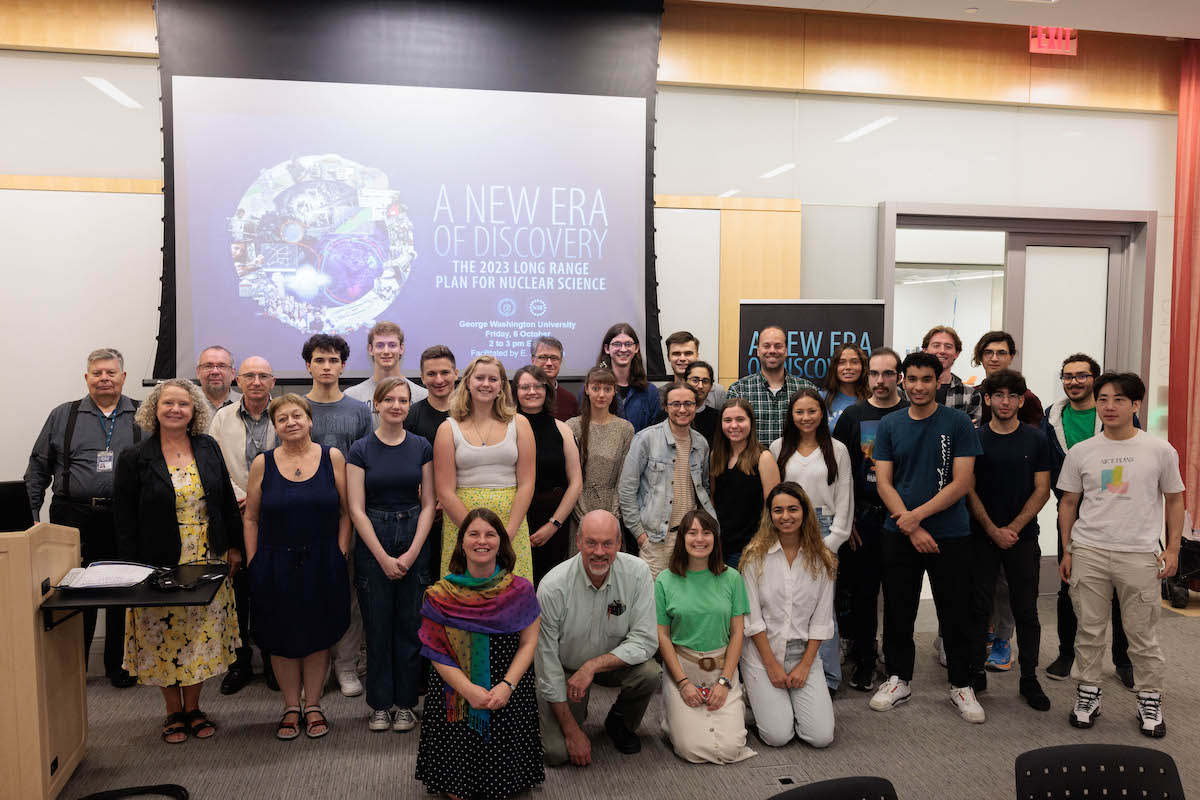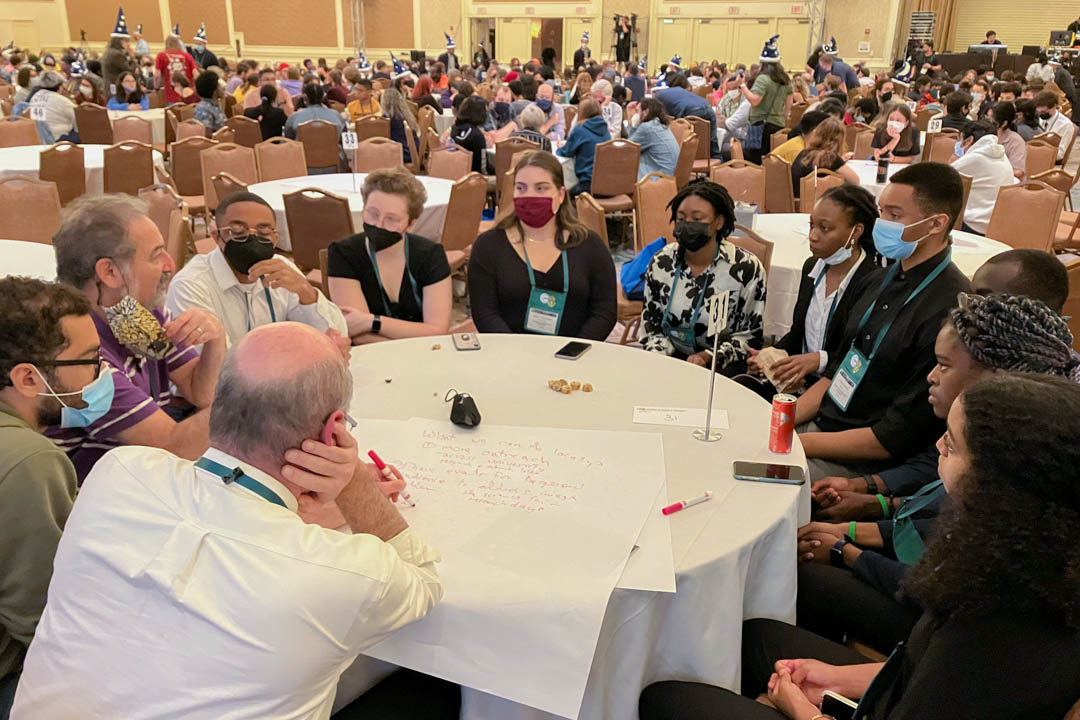Every five to eight years, the Nuclear Science Advisory Committee (NSAC) produces a long-range plan that establishes for the U.S. Department of Energy (DOE) and the National Science Foundation (NSF) a roadmap for advancing nuclear physics research in the U.S. over the next decade. These recommendations have profound repercussions, since they shape the federal funding priorities that make the United States a world leader in the field.
On Friday, physics students and faculty at the George Washington University gathered at the Science and Engineering Hall for a livestreamed debrief of the NSAC’s latest report, “A New Era of Discovery: The 2023 Long Range Plan for Nuclear Science,” released Oct. 4. GW was one of just 20 sites in the United States to host a local launch of this report.
The event was part of GW’s decades-long legacy of convening and developing innovators in the field of nuclear physics, Vice Provost for Research Pamela Norris said. And the path chartered by the NSAC’s latest report will have a direct effect on—and be affected by—work being done at the university.
“The long-range plan will support a wealth of physics opportunities where GW physicists, faculty, postdocs and students will play a crucial role, and we are excited to be able to share in its launch today,” Norris said.
GW helped usher in the birth of the atomic age in 1939: It was in Room 209 of GW’s Hall of Government that the Nobel Prize-winning physicist Niels Bohr announced the splitting of the uranium atom during the Fifth Washington Conference on Theoretical Physics. In the 1980s, GW was a founding member of the Thomas Jefferson National Accelerator Facility (JLab), then known as the Continuous Electron Beam Accelerator Facility (CEBAF), which scientists today use to probe the atom’s nucleus. GW faculty and students still play a leading role in numerous JLab experiments.
GW also is home to the Institute for Nuclear Studies in the Columbian College of Arts and Sciences (CCAS), which houses both experimental and theoretical researchers in the field and maintains partnerships with major institutions and facilities including the National Institute of Standards and Technology, the U.S. Naval Research Laboratory and NASA. GW researchers also partner with and lead experiments at centers farther afield, including the Triangle Universities Nuclear Laboratory in North Carolina, the Mainz Microtron (MAMI) in Mainz, Germany, and the Paul Scherrer Institute in Switzerland.
NSAC chair Gail Dodge, dean of the College of Sciences at Old Dominion University, summarized the committee’s findings and its recommendations via livestream. These ranged from the highly technical (prioritizing research on neutrinoless double beta decay, a phenomenon that, if observed, could help resolve the question of why our universe contains more matter than antimatter) to the specific (completing construction of the Electron-Ion Collider at Brookhaven National Laboratory, an initiative to which GW Assistant Professor of Physics Axel Schmidt has contributed) to the more general but nonetheless imperative (removing barriers of entry to the field by emphasizing diversity, equity and inclusion and developing a nuclear workforce from all walks of life).
“The highest priority of the nuclear science community is to capitalize on the extraordinary opportunities for scientific discovery made possible by the substantial and sustained investments of the United States,” Dodge said, quoting the report’s first recommendation. “We must draw on the talents of all in the nation to achieve this goal.”
GW Professor of Physics Evangeline J. Downie, who served on the NSAC from 2020 to 2023 and helped write the plan, said the committee’s recommendations are meaningful in part because of its composition. The 21-member NSAC is made up of working physicists from an array of disciplines and institutions, as is its more expansive writing committee of 62. Thus, rather than imposing priorities on the field from outside it, the NSAC is reactive to ongoing developments and reflects work being done in real time.
Similarly, nuclear physics research at GW is highly collaborative. Eight major university grants have a nuclear physics framework, and these projects are not siloed, Downie said, since developments in each have ramifications for all the others. In a brief overview of the work being done at the university, Downie pointed out that GW is involved in a variety of approaches to investigating fundamental particles, particularly the nature of the protons and neutrons—collectively called nucleons—that make up the majority of all visible mass.
“Physics is inherently a group endeavor,” Downie said. “So it’s important that we come together as a community and set priorities because we have to choose what we can do.”
Long-range planning is also necessary because safe, meaningful experimentation in nuclear physics necessarily takes time, Downie said. She pointed to her own MUon proton Scattering Experiment (MUSE), which attempts to measure the radius of a proton. First proposed in 2012 and funded in 2016, the experiment is now in its first year of major data production.
“That kind of illustrates to you the purpose of doing these long-range plans—the timelines of a nuclear physics experiment, the investment involved is very large, and so you have to think carefully about the science to decide which things are worth that level of investment,” she said. “As much as we thought we knew the proton in 2010, we discovered we’re not even sure how big it is.”



